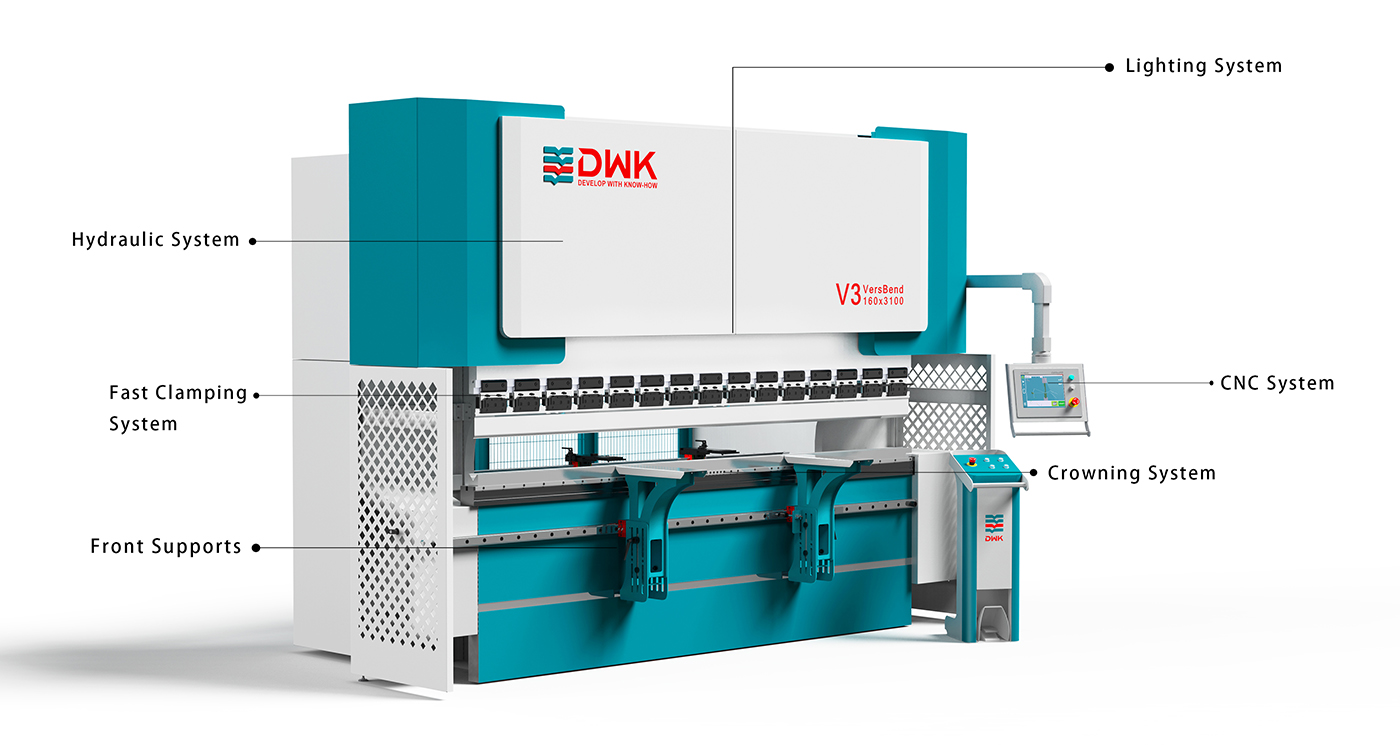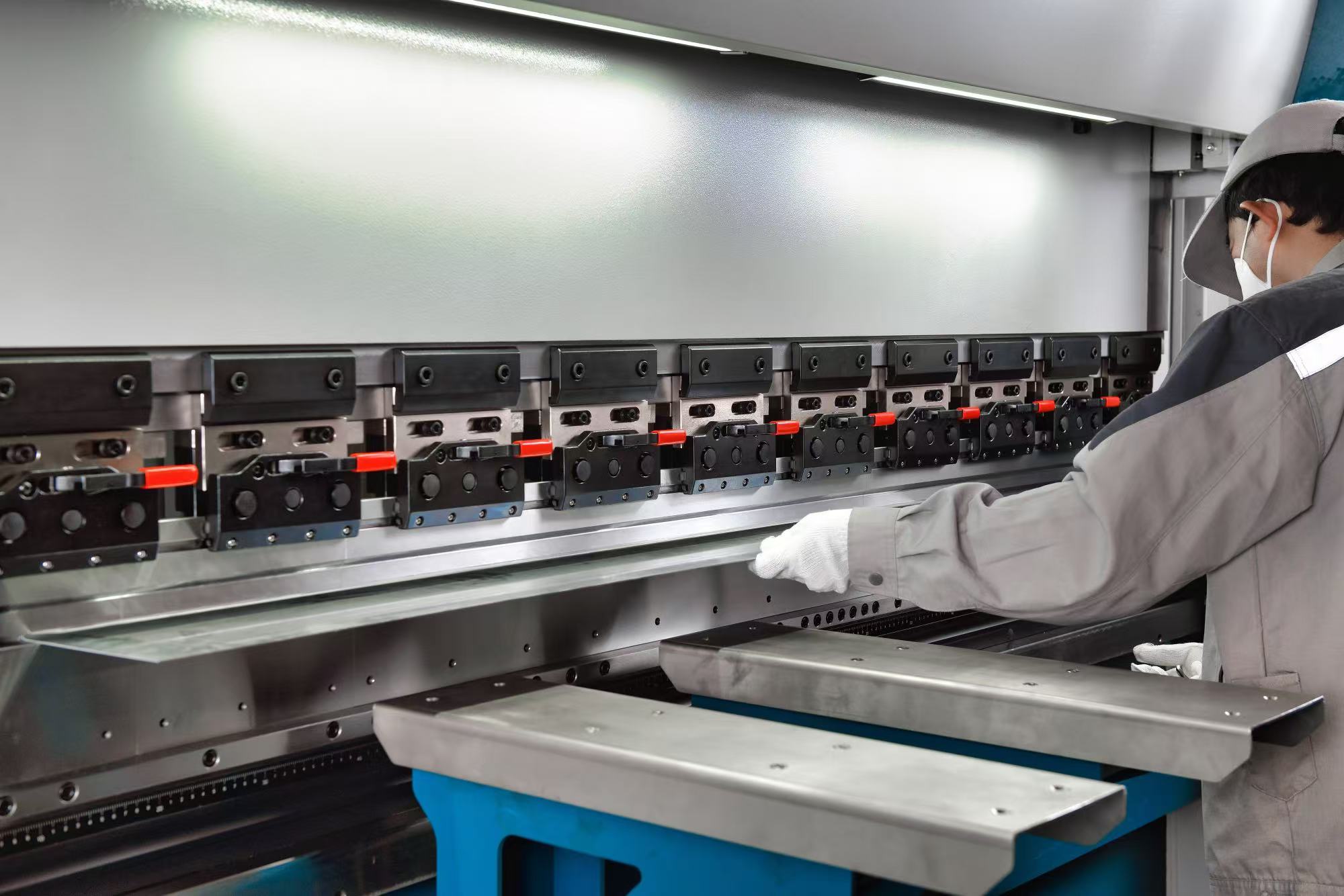Please Choose Your Language
- All
- Product Name
- Product Keyword
- Product Model
- Product Summary
- Product Description
- Multi Field Search
TEL : +86-18920692288
Email : dwk0002025@163.com
Views: 0 Author: Site Editor Publish Time: 2025-09-23 Origin: Site











Choosing the right bending technology can make or break your sheet metal fabrication workflow. Hydraulic bending equipment, in particular, has risen to prominence across industries ranging from automotive to appliance manufacturing. The combination of raw power, precision control, and automation compatibility makes hydraulic press brakes a go-to solution for shops that demand both accuracy and throughput.
At the heart of every hydraulic bending machine is its hydraulic circuit: pumps, valves, cylinders, and piping designed to move large forces smoothly and predictably. Unlike mechanical or purely electric presses, hydraulics excel at absorbing shock loads and maintaining consistent pressure throughout each bend cycle. This intrinsic stability yields several advantages:
Constant Ram Speed and Pressure
A well-designed hydraulic system maintains consistent ram (ram = the moving beam that presses the metal) speed and force throughout the bending stroke. As the ram travels through the bend, pressure relief and proportional valves regulate oil flow to avoid hydraulic spikes or dips. This consistency prevents over-bending at the start or end of the stroke, ensuring every part leaves the machine at the intended angle.
Resistance to External Disturbances
In a busy production environment, factors like minor power fluctuations, temperature changes, or tool wear can affect machine performance. Hydraulic circuits, by virtue of their closed-loop control and integrated accumulators, buffer these disturbances. The result is a machine that keeps bending angles within tight tolerances—even as ambient conditions or component wear evolve over time.
Smooth Acceleration and Deceleration
Hydraulic drives allow programmable acceleration and deceleration profiles. During the initial advance, the ram can move rapidly to the workpiece, then slow down precisely as it enters the bend zone. After the bend, it can retract quickly. This programmable motion reduces cycle time without sacrificing accuracy, because the system never “slams” into the tooling.
Minimized Vibration & Mechanical Shock
Mechanical presses rely on flywheels and clutches that can generate vibration or shock during engagement. Hydraulic presses, with direct fluid-power transmission, inherently produce less noise and vibration. Less mechanical shock means reduced wear on frames and guides, prolonging machine life and sustaining accuracy.
High Ton-Per-Square-Millimeter Capability
Hydraulic presses deliver great force in a compact envelope. For heavy gauge work (thick steel or stainless), hydraulics can produce the necessary tonnage without requiring an excessively large footprint. And because the force curve remains flat over a range of motion, the bending force never dips even at maximum stroke.
Summary: The stable, predictable nature of hydraulic power ensures each bend follows the programmed angle precisely, resulting in nominal variation between first and last part. Shops benefit from reduced scrap, consistent product quality, and machines that maintain peak performance cycle after cycle.

Springback—the tendency of metal to partially return toward its original shape after bending—is a perennial challenge in sheet metal work. Precise control over the hydraulic system's pressure and hold time is key to minimizing springback and achieving consistent part dimensions:
Programmable Dwell & Pressure Ramping
Modern hydraulic press brakes allow users to program a “dwell” period at the bottom of the bend. During dwell, the ram holds the metal at full force for a set time, allowing elastic recovery to stabilize before retraction. Pressure ramping, which gradually increases force instead of instantly applying full pressure, reduces sudden material deformation that exacerbates springback.
Adaptive Pressure Compensation
Advanced CNC-hydraulic controls can monitor actual ram position versus target bend angle in real time. If slight springback is detected, the system can automatically compensate by adjusting pressure or adding a micro-bend. This closed-loop feedback ensures that every bend meets the nominal dimensions even as material properties vary between batches.
Fine-Tune Force Curves
Rather than a simple on/off valve, proportional hydraulic valves let operators define customized force curves—how fast and how hard the ram should press at different points. By tailoring these curves to each material type and thickness, shops can minimize cracking or ove-strain while hitting exact angles.
Multi-Stage Bending Sequences
For ultra-stiff metals or thick plates, a single high-force bend may still lead to pronounced springback. Hydraulic systems support multi-stage bending, where an initial light pre-bend is followed by full-force shaping. This gentler approach conditions the metal gradually, reducing final springback and preserving surface finish.
Reduced Material Waste
When springback is controlled effectively, the need for rework or oversized blank allowances diminishes. Consistent first-pass accuracy translates directly into material savings and lower scrap rates, boosting the shop's bottom line.
Summary: Precision pressure control in hydraulic bending equipment tackles springback proactively, ensuring parts meet exact dimensional criteria. The combination of programmable dwell, adaptive compensation, and finely tuned force curves empowers manufacturers to deliver tight tolerances batch after batch.
The synergy between CNC controls and hydraulic power is what transforms a traditional press brake into a high-precision production system. Here's how CNC-hydraulic integration yields unparalleled repeatability and automation readiness:
Axis Synchronization & Ram Crowning
CNC controllers manage the synchronization of multiple hydraulic cylinders and back-gauge axes. Electronic crowning compensates for beam deflection under load—critical for long bends—by dynamically adjusting cylinder extension so the ram force remains uniform along its length. The result is a straight bend line, not a slight arc, across the entire workpiece.
Automated Tool Offsets & Tool Libraries
A CNC system can store tooling data (punch and die geometry, offset values, bend radii requirements) in an extensive library. When a new job is loaded, the controller automatically applies the correct offsets to the hydraulic axes, eliminating manual calculations and reducing setup errors.
Programmed Back-Gauge Sequences
Complex multi-bend parts require the back-gauge to reposition precisely for each bend. CNC-hydraulic systems execute these multi-axis moves in sequence, coordinating ram motion with gauge shifts. This reduces operator involvement and slashes cycle times for multi-bend jobs.
Recipe Management & Job Recall
Once a part program is perfected, shops can save it under a unique recipe name. Future production runs—or variant part orders—can reuse the same recipe instantly, ensuring identical machine behavior even on different production days or with different operators.
Robotic Integration & Unattended Operation
CNC-controlled hydraulic brakes can be integrated into automated bending cells with robotic loading/unloading. With preloaded programs and safety interlocks, these cells can operate 24/7 with minimal supervision, leveraging the hydraulic system's robustness and the CNC's precision to deliver consistent parts around the clock.
Summary: CNC integration elevates hydraulic bending from a manual, skill-dependent process to a reliable, repeatable, and highly automated system. By marrying precise fluid power with smart controls, manufacturers achieve unparalleled consistency, quick changeovers, and scalability.

Complex Geometry Requirements
The range hood design demanded a folded flange around a curved perimeter, five successive 90° bends at varying radii, and an integrated channel for mounting hardware. Conventional manual brakes struggled with the compound curvature and tight tolerances, leading to high reject rates (up to 15%) and labor-intensive rework.
Implementation of a CNC-Hydraulic Press Brake
The shop installed a 125-ton, 3-meter hydraulic press brake equipped with proportional valves, a state-of-the-art CNC control, and segmented hydraulic tooling. They programmed a four-stage bending sequence:
Stage 1: Light pre-bend at 30% force to form initial radius
Stage 2: Dwell compensation at neutral angle for 2 seconds
Stage 3: Full-force bend at programmed angle
Stage 4: Finishing bend with adjusted force curve to fine-tune springback
Results & Performance Metrics
First-Pass Yield Improvement: Scrap rate dropped from 15% to under 2%.
Cycle Time Reduction: Total bend cycle decreased from 45 seconds to 28 seconds per part.
Dimensional Accuracy: Bend angles held within ±0.2° tolerance, down from ±1.0°.
Labor Savings: Automated back-gauge and teach-mode programming cut operator setup time by 60%.
Material & Surface Finish Benefits
Switching from manual to hydraulic bending eliminated micro-cracks and surface marring. The range hood parts—stamped from 1.2 mm stainless steel—retained their brushed finish, requiring no secondary polishing or touch-ups.
Scalability & ROI
With monthly volumes exceeding 5,000 units, the payback on the hydraulic press brake—including tooling and integration costs—was realized in just eight months. The facility now runs two shifts producing multiple appliance models with minimal changeover downtime.
Summary: This case study highlights how hydraulic bending equipment, when paired with CNC controls and advanced tooling, solves the toughest sheet metal challenges: complex geometries, tight tolerances, and high throughput—all while preserving material aesthetics and maximizing ROI.
Hydraulic bending equipment offers a compelling blend of power, precision, and automation readiness that few other technologies can match. Its stable hydraulic circuits deliver consistently accurate bend angles, while fine-tuned pressure control combats springback and upholds dimensional uniformity. CNC-hydraulic integration transforms press brakes into reliable, repeatable production workhorses capable of lights-out operation. Real-world applications—such as the high-precision range hood case study—underscore dramatic improvements in yield, cycle time, and total cost of ownership.
For manufacturers seeking to elevate their sheet metal processing capabilities, DWK Machine Tool (Tianjin) Co., Ltd. provides a comprehensive lineup of hydraulic CNC press brakes, segmented tooling solutions, and integration packages tailored to every industry need. Whether you're fabricating intricate stainless steel assemblies or high-volume structural panels, DWK's expertise in hydraulic bending technology ensures you get the precision, flexibility, and support required to stay competitive.
Discover how DWK's hydraulic bending solutions can streamline your production and enhance part quality—visit www.dwkmachine.com or contact their technical team today to request a consultation.